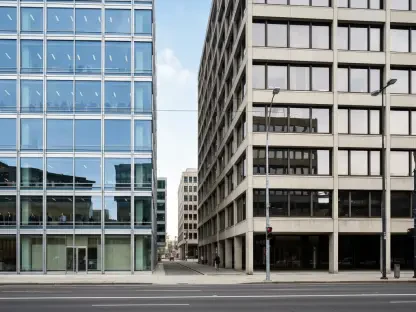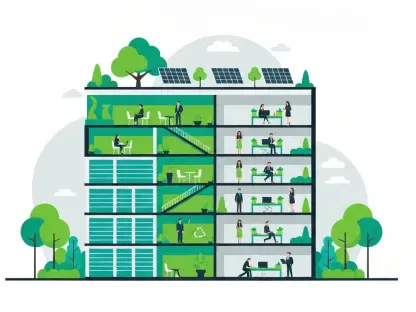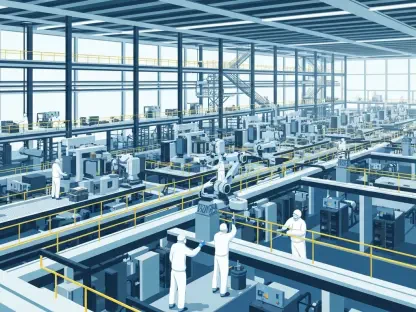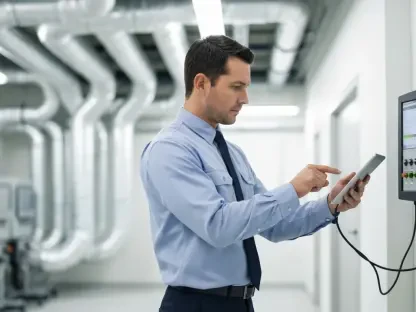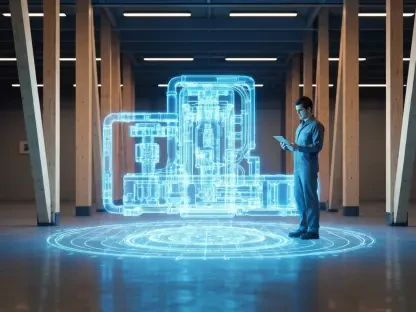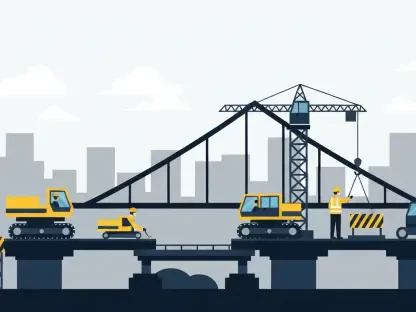The latest strides in construction technology take center stage, spotlighting an era defined by innovation and integration. These advancements are not just altering how buildings are designed and constructed; they also emphasize building smarter, safer, and more resource-efficient structures. By harnessing advanced technology, the construction industry is progressing from conventional methods to cutting-edge solutions that resolve challenges, expedite processes, and expand capabilities. Such technological innovations span from improving risk management and documentation to enhancing reality capture and collaboration. Each innovation brings distinct advantages tailored to meet specific aspects of construction, ultimately transforming the landscape in significant ways.
New Frontiers in Drone Applications
Enhanced Performance with DJI’s Matrice 400
DJI’s introduction of the Matrice 400 signifies a groundbreaking leap in drone technology, mainly benefiting construction and various other industries through its superior specifications. This new drone is precisely engineered to revolutionize how aerial tasks are performed, boasting an unmatched flight time of 59 minutes alongside a payload capacity reaching up to 6 kilograms. These features collectively ensure not only prolonged missions but also efficiency in covering extensive areas without repeated returns for recharging or equipment adjustments. The technological advancements in its design drastically minimize operational interruptions, facilitating smoother and more expansive projects on-site.
Further supporting its practical application in diverse environments, the Matrice 400 is equipped with an advanced obstacle-sensing system featuring LiDAR and millimeter wave radar. This technology helps in avoiding collisions and enhances navigation even in complex scenarios, like maneuvering around power lines or glass-walled skyscrapers. Such capabilities are pivotal in maintaining operational safety and accuracy, making the device indispensable in high-stakes environments. Additionally, the drone is engineered to withstand extreme temperatures, broadening its usability from icy locales at -20°C to sweltering conditions peaking at 50°C. With smart augmented reality (AR) projections facilitating seamless navigation, operators can maneuver more confidently, contributing significantly to construction-related tasks where precision and reliability are paramount.
Versatility and Reliability in Diverse Conditions
The Matrice 400 is crafted to redefine operator experiences in challenging terrains, thanks to its extraordinary endurance and resilience. Its robust construction not only handles strenuous conditions but does so with notable precision, reflecting DJI’s dedication to quality and performance. The AR projection feature enhances usability across various scenarios, guiding operators through complicated settings with an intuitive interface. Such attributes embody the blend of technological superiority and operational safety, demonstrably uplifting the standards within the field. This comprehensive suite of features means that users gain access to an adaptable and safe drone solution that meets the dynamic demands of the modern construction landscape.
Elevating Documentation and Coordination
AI-Driven Insights with Egnyte’s Project Hub
Egnyte’s AI-powered Project Hub is engineered to tackle the common dilemmas of documentation and coordination within construction projects, introducing a robust framework for seamless and secure collaboration. By offering a centralized interface, it standardizes project management tasks that were traditionally disjointed, improving efficiency right from a construction project’s inception. One of the key innovations of the Project Hub is its customizable project setup wizard. This vital tool allows firms to craft a standardized folder structure, saving both time and resources while promoting consistency throughout the entire project lifecycle. Such infrastructural streamlining is key for organizations aiming to scale best practices while minimizing errors due to disorganized workflows.
Beyond mere document storage, the Project Hub acts as a central repository that houses and organizes a wealth of project information, from design and regulatory approvals to field data and financial parameters. By consolidating information within one system, users gain ample oversight and can make decisions supported by comprehensive data insights. This structured process enlightens all stakeholders, reducing miscommunications and costly delays, thus elevating the overall project management experience. These tools are revolutionary for organizations striving to optimize collaboration practices and drive innovation in construction documentation.
Enhancements in Device Integration with Bluebeam
Another groundbreaking move in advancing construction coordination is exhibited by Bluebeam’s series of enhancements, designed to further integrate technology applications into daily workflows. A significant update includes the introduction of a new integrations directory that operates as a centralized hub. Through this directory, users can establish seamless connections with various third-party applications, including industry standards like Procore Documents, Microsoft SharePoint, and Autodesk Construction Cloud. Modification of Bluebeam’s Revu application stands out with its newfound compatibility with ARM-based devices, which includes Apple’s M-series Macs via Parallels. These enhancements offer approximately 30% quicker processing times than prior versions, enabling teams to process complex documents more fluidly.
Through such broad integration and compatibility workarounds, Bluebeam supports an inclusive and efficient workflow across varied platforms, enhancing user productivity without technological constraints. In doing so, construction teams benefit from smoother operations, bolstering their capacity to manage complex projects through superior technology access. Not limited to technical integration, these improvements foster a culture of inclusiveness and uniformity, maximizing workflow efficiency for professionals across diverse hardware configurations.
Redefining Reality Capture and Risk Management
OpenSpace Air: Unified Reality Capture
OpenSpace has taken a substantial step forward with OpenSpace Air, an innovation that consolidates reality data streams for comprehensive project insights. This unified platform merges drone imagery, 360-degree camera snapshots, mobile captures, and laser scans into a single, coherent visual record. The impact is profound for construction teams striving to enhance accuracy in planning and tracking project progression. By allowing aerial imagery to pair seamlessly with internal reality captures, construction professionals gain exterior perspectives earlier in development, crucial for preempting issues in the construction timeline. This preemptive insight ensures that potential problems are identified and addressed ahead of time, mitigating costly setbacks.
The immediate and prolonged implications of data consolidation in reality capture lie in its ability to augment project accountability and catalyze informed decision-making. These capabilities underscore the overarching trend of technology not just transforming how data is collected and handled, but also how it fundamentally drives project efficiency. The potential to nip problems in the bud is invaluable, ensuring projects are kept on track efficiently and economically. Construction leaders who integrate these systems can effectively allocate resources, buffering against typical delays and financial overruns that plague traditional methods.
Risk-Intelligent Insights with BuildersRiskIQ
Recent advancements in construction technology are revolutionizing the industry, marking a new era characterized by innovation and synergy. These advancements are transforming not only how buildings are designed and erected but also emphasizing the construction of smarter, safer, and more resource-efficient structures. By leveraging cutting-edge technology, the industry is moving away from traditional methods to embrace modern solutions that address challenges, streamline processes, and enhance capabilities. These innovations range from improving risk management and documentation to advancing reality capture and teamwork. Each technological breakthrough offers unique benefits tailored to tackle specific construction challenges, ultimately reshaping the industry in meaningful ways. As the construction sector continues to evolve with these technological strides, it becomes increasingly capable of delivering projects that meet modern demands and sustainability goals, highlighting a future where efficiency and innovation go hand in hand.


